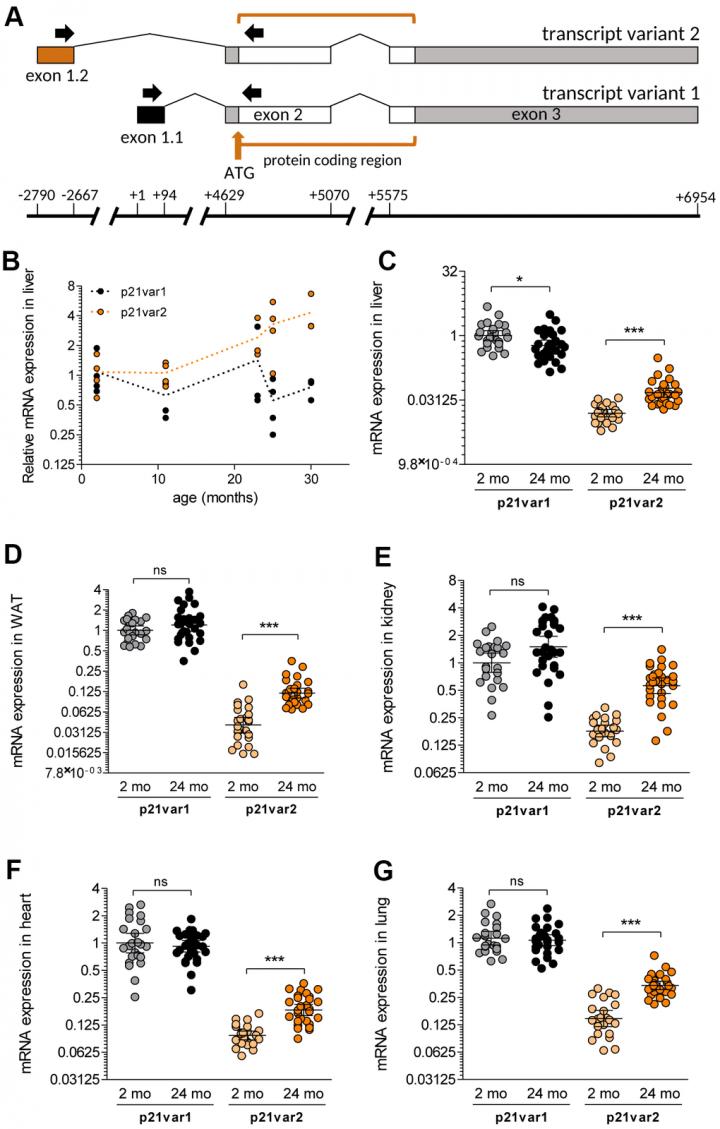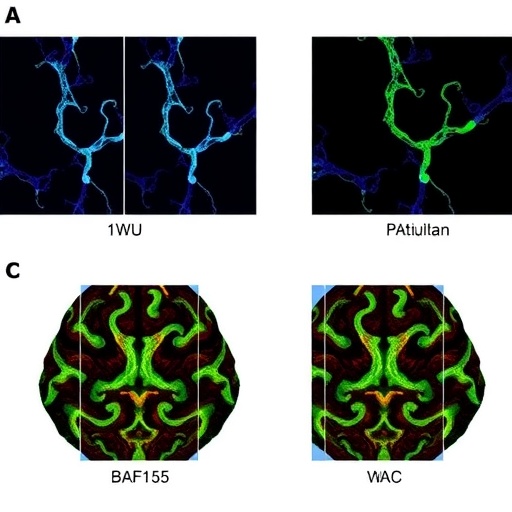Upon treating mice systemically with doxorubicin, which induces widespread cellular senescence in vivo, variant 2 increased to a larger extent than variant 1
Aging published “Cdkn1a transcript variant 2 is a marker of aging and cellular senescence” which reported that cellular senescence is a cell fate response characterized by a permanent cell cycle arrest driven primarily the by cell cycle inhibitor and tumor suppressor proteins p16Ink4a and p21Cip1/Waf1. In mice, the p21Cip1/Waf1 encoding locus, Cdkn1a, is known to generate two transcripts that produce identical proteins, but one of these transcript variants is poorly characterized.
The authors show that the Cdkn1a transcript variant 2, but not the better-studied variant 1, is selectively elevated during natural aging across multiple mouse tissues.
Importantly, mouse cells induced to senescence in culture by genotoxic stress upregulated both transcripts, but with different temporal dynamics: variant 1 responded nearly immediately to genotoxic stress, whereas variant 2 increased much more slowly as cells acquired senescent characteristics.
Upon treating mice systemically with doxorubicin, which induces widespread cellular senescence in vivo, variant 2 increased to a larger extent than variant 1. Variant 2 levels were also more sensitive to the senolytic drug ABT-263 in naturally aged mice.
Upon treating mice systemically with doxorubicin, which induces widespread cellular senescence in vivo, variant 2 increased to a larger extent than variant 1.
Thus, variant 2 is a novel and more sensitive marker than variant 1 or total p21Cip1/Waf1 protein for assessing the senescent cell burden and clearance in mice.
Dr. Judith Campisi from The Buck Institute for Research on Aging as well as The University of California said, “The stringent cell growth arrest associated with cellular senescence is determined, among other mechanisms, by activities of cyclin-dependent kinase inhibitor proteins p16Ink4a and p21Cip1/Waf1, encoded by the Cdkn2a and Cdkn1a loci, respectively.“
The increased expression of these proteins is a major hallmark of senescence in most cells, and therefore have become markers of senescence both in culture and in vivo.
Consistent with the fact that senescent cells increase with age in many mouse and human tissues, Cdkn2a mRNA levels also increase with age in these tissues.
To date, possible changes in the expression of Cdkn1a transcript-specific variants during age or cellular senescence have not been explored.
The authors also analyze expression levels in a cell culture model of mouse cells subjected to genotoxic stress-induced senescence to evaluate their relative utility as senescence markers both in culture and in vivo.
The Campisi Research Team concluded in their Aging Research Output that it remains unexplored the possibility that the different transcript variants are preferentially associated with one or other cell fate.
Human cells also express several Cdkn1a transcript variants.
Among the ten human transcript variants currently annotated, at least one shares translational regulatory mechanisms with the murine p21var2.
Interestingly, even though murine variant 2 and human variant 4 do not appear to share sequence homology, the translational regulation in both transcripts is driven by the integrated stress response and results in cell cycle arrest.
The potential relevance of this mechanism for cellular senescence in humans remains unknown, and the functions and interrelations of the different Cdkn1a transcript variants have not been studied in depth.
Sign up for free Altmetric alerts about this article
DOI – https:/
Full Text – https:/
Correspondence to: Judith Campisi email: [email protected]
Keywords: p21, p53, mouse dermal fibroblast, ionizing radiation, doxorubicin
About Aging-US
Launched in 2009, Aging-US publishes papers of general interest and biological significance in all fields of aging research as well as topics beyond traditional gerontology, including, but not limited to, cellular and molecular biology, human age-related diseases, pathology in model organisms, cancer, signal transduction pathways (e.g., p53, sirtuins, and PI-3K/AKT/mTOR among others), and approaches to modulating these signaling pathways.
To learn more about Aging-US, please visit http://www.
Aging-US is published by Impact Journals, LLC please visit http://www.
Media Contact
18009220957×105
[email protected]
Media Contact
RYAN JAMES JESSUP
[email protected]
Original Source
https:/
Related Journal Article
http://dx.





